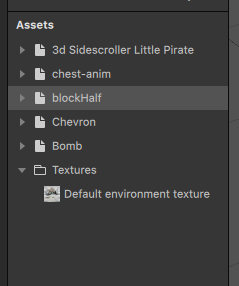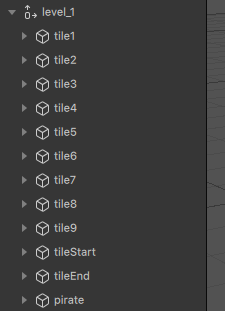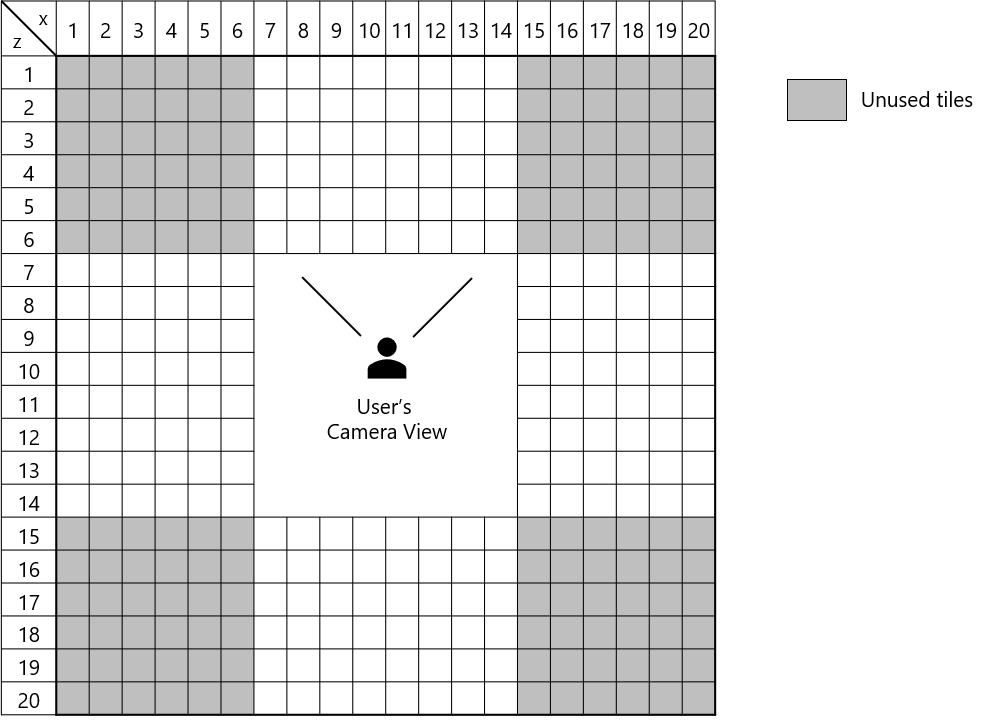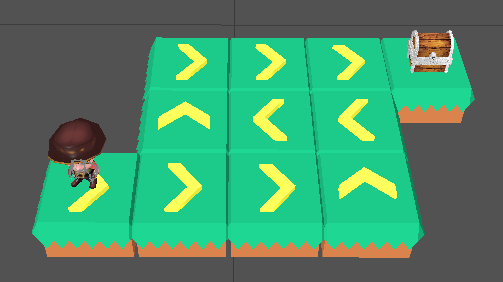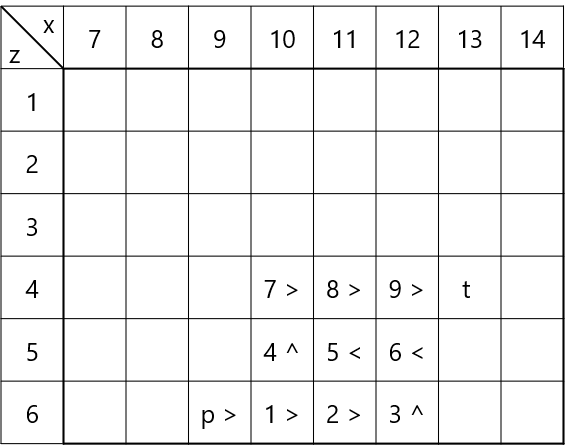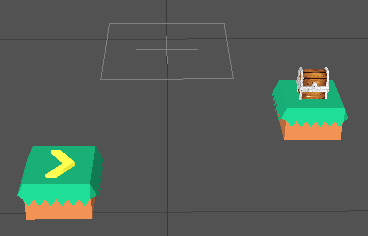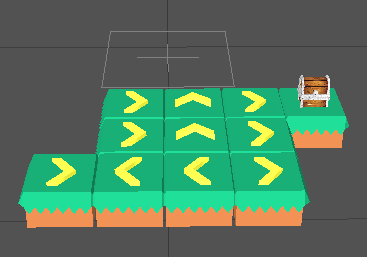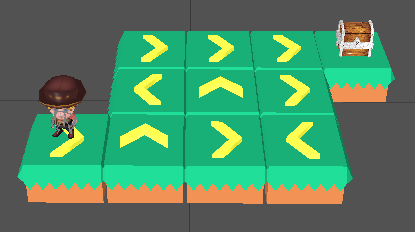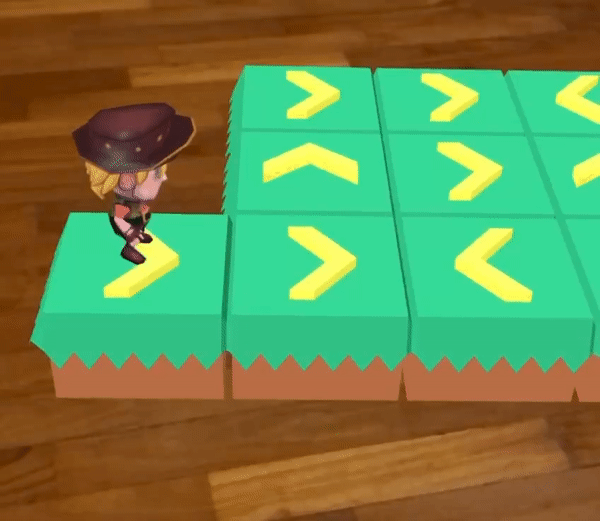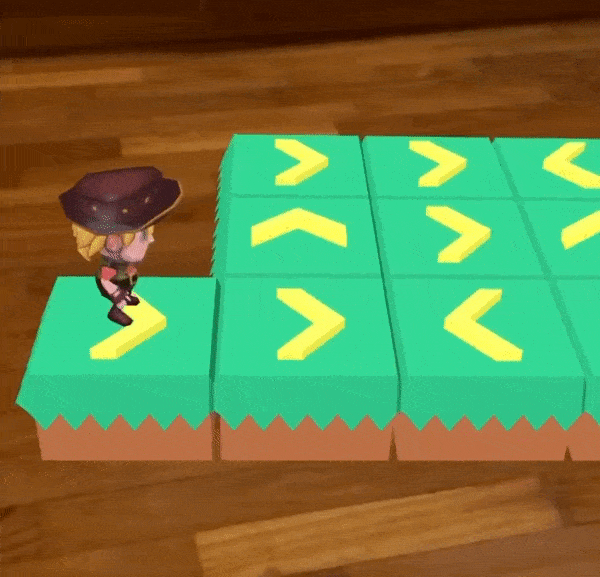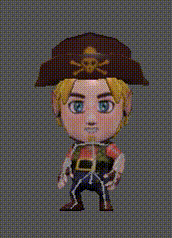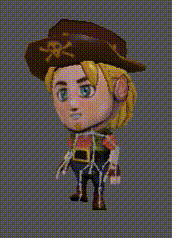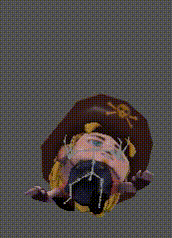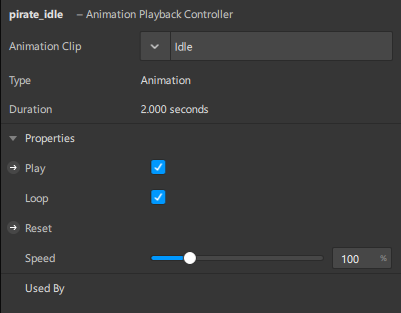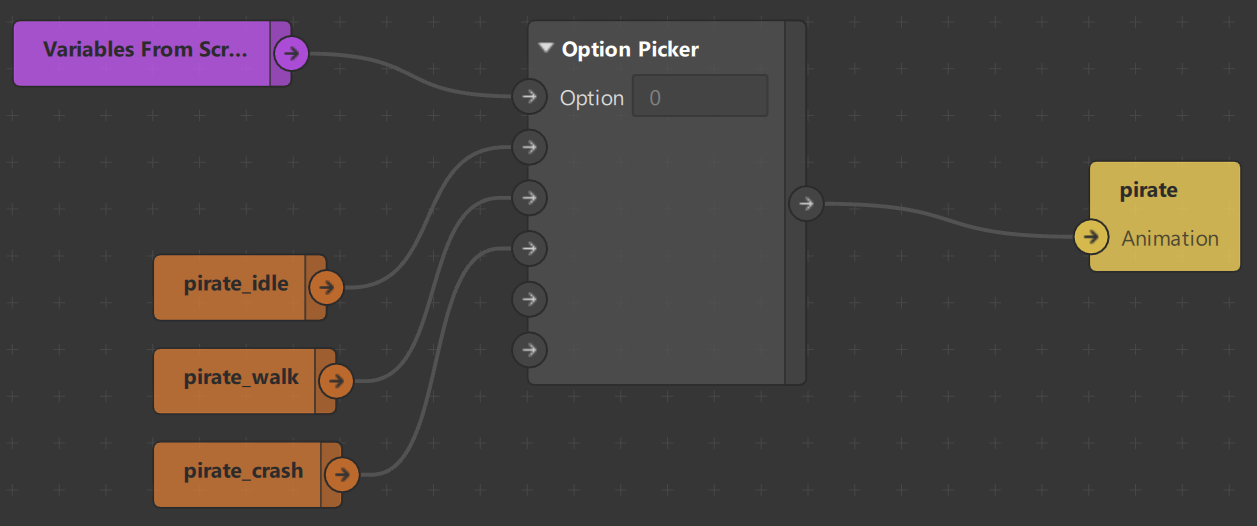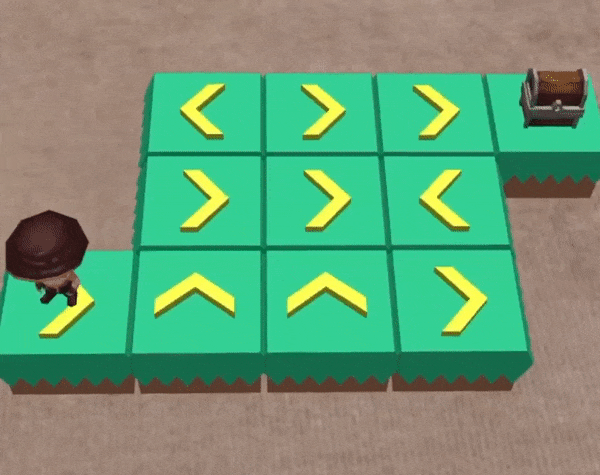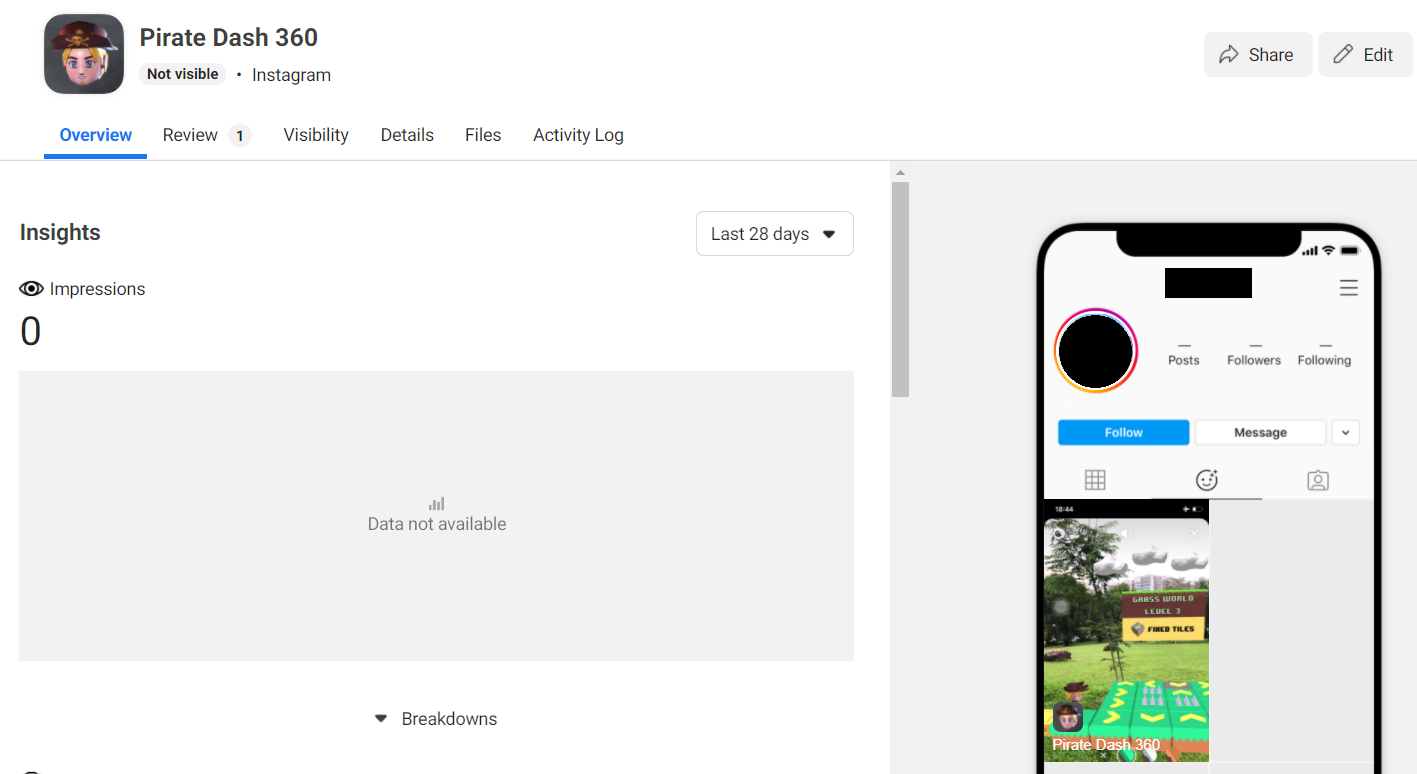Submission for Facebook Developer Circles Community Challenge
Team Members: Gabriel Koh, Ng Rui Qin, Ong Yan Kai, Vincent Tok
Always wanted to create an immersive Instagram game effect, but not sure how to? We will show you the way! This tutorial will guide you on how to create an Augmented Reality (AR) puzzle game using the Spark AR Studio - no experience required.
It can be daunting to learn a new technology or software, especially for cutting edge technology such as AR. Fret not, we all start somewhere! For us, our journey and foray into this space only commenced during the competition period of the Facebook AR Hackathon, and if we can do it, so can you!
We will be re-creating a puzzle game that we did for the Facebook AR Hackathon, called Pirate Dash 360. It is an immersive 360° AR puzzle platformer game filter that utilizes the phone's back-facing camera. Players guide the pirate to the treasure by swapping directional tiles.
Note: We will be creating a simplified, one-level version of Pirate Dash 360.
Through this tutorial, you will learn how to:
- Import and customize game assets using Spark AR Studio
- Utilize key features of Spark AR Studio such as Plane Tracker, Touch Gestures and Patch Editor
- Use JavaScript and Spark AR API to access and augment the game environment
- Add exciting custom animation through Patch Editor and Scripting
- Javascript: https://javascript.info, https://www.json.org/json-en.html
Basic JavaScript knowledge is recommended for this tutorial as it is required for scripting of animations and setting up the scene for the game. Within JavaScript, JavaScript Object Notation (JSON) is a data format which can be used to define the structure of the game. In Pirate Dash 360, it is used to define the tiles required for each level.
- Spark AR Studio v98: https://sparkar.facebook.com/ar-studio/download
- Visual Studio Code, or any other preferred code editor: https://code.visualstudio.com/download
To get started, download this repository by selecting Download ZIP and save it to a familiar location.
root
├ starter
| ├ objects
| └ starter.arproj
├ solution_part_1
├ solution_part_2
└ solution_part_3Within the starter folder (which you will work on), the objects folder contains all of the game assets that we will require for this tutorial. The starter.arproj file simply contains an empty Plane Tracker project. There are also 3 solution part folders, which act as checkpoints for your progress and will be mentioned throughout the tutorial. With a good understanding of the project structure, we can now begin!
We will proceed to import and customize the game assets in the Spark AR environment. To simplify this process, please refer to the /starter/objects folder for all the relevant game assets that you would require for this section.
The objective of this section is to prepare the static assets for subsequent feature implementation i.e creating the augmented environment, implementing game logic and so on.
First, we need to import the relevant assets into Spark AR Studio.
Show Instructions
-
Open Spark AR Studio.
-
On the left navigation pane, click Open and select
/starter/starter.arprojto open the project. -
From here you can view the Scene environment that we will be working with. Proceed to import the pirate object:
-
Click +Add Asset on the bottom left of the side navigation drawer, followed by Import From Computer.... Select
/starter/objects/pirate/scene.gltfto import the Pirate asset. -
Repeat Step 3 for
/treasure-chest/chest-anim.fbx,/tile/blockHalf.fbxand/directions/scene.gltfunder/starter/objectsto import tiles, directions and treasure assets respectively. You should see the following:
- Next, drag the 3d Sidescroller Little Pirate (pirate), chest-anim (treasure chest), blockHalf (tile), Chevron (direction) from the Assets category into the Plane Tracker planeTracker0. You should be able to see the following:
Now that we have all our assets placed into the Scene environment via the Plane Tracker, the next thing we want to do is to re-size them.
Show Instructions
-
Proceed to click on 3d Sidescroller Little Pirate under planeTracker0, you will see a navigation pane showing up on the right hand side of Spark AR Studio. You may adjust the size of the 3D object via the x, y, z coordinates under Scale section. For the pirate object, kindly use the following coordinate values: x = 0.07, y = 0.07, z = 0.07.
-
Do the following for the chest-anim, blockHalf, and Chevron object, based on the coordinates given below:
Asset x y z blockHalf 1 1 1 Cheveron 0.5 0.7 0.5 chest-anim 1.21876 1.36885 1.09586 Afterwhich, you should be able to see the following:
Size of all assets changed, however, only properties of pirate can be seen in the screenshot.
Finally, we are done with placing and resizing our assets. To opt for your very own design, you can choose to whichever texture and color you prefer. In order to change the textures, select the object under Assets. You will notice the right navigation pane showing, proceed to choose from the available textures and colors under Albedo. For this tutorial, we will proceed to change the color of direction to yellow.
Show Instructions
- Click on Chevron → Scene_-_Root under Assets.
- Under Albedo → Texture, click the dropdown and remove any texture.
- Click Color, and select a color of your preference, in the project, we decided on Yellow.
As our current Chevron is only oriented in one direction, we need to create three different chevrons with different orientations. We can do this by adjusting its rotation.
Show Instructions
-
Start off by renaming Chevron under planeTracker0 to chevron_up.
-
Make two more copies of chevron_up and rename it to chevron_right, chevron_left.
-
Click on chevron_up, in the right navigation bar, adjust values in Rotation: x = -90, y = 0, z = -179.
-
Repeat Step 3 for chevron_right and chevron_left using the details from the following table.
Asset x y z chevron_right 90 -90 -180 chevron_left -90 -90 -180 You should be able to see the following:
Rotations of all assets changed, however only properties of chevron_left can be seen in screenshot.
This section encompasses the concept of grouping different objects together, as well as organizing them in the correct structure. You may have noticed that certain objects like the Pirate are in fact a group of objects. In this tutorial, we need to group tiles with directions, as well as tiles with treasure.
Show Instructions
-
Right click planeTracker0, select Add and click Create a Null Object, naming it level1.
-
Make a copy of blockHalf.
-
Rename blockHalf to tile1 and drag the chevron_right object into tile1.
-
Rename blockHalf0 to blockHalf
-
Drag tile1 into level1
-
Adjust tile1 Scale to x = 0.09, y = 0.12, z = 0.09.
-
Adjust tile1 → chevron_right Scale to 0.5, 0.7 and 0.5 for x, y and z respectively.
-
Adjust tile1 → chevron_right Position to -0.27349, 0.71012 and 0.85518 for x, y, and z respectively.
-
Repeat Steps 2 to 8 for chevron_up and chevron_left, naming them tile3 and tile5 respectively, instead of tile1 for Step 4. Refer to the details for the different positions for Step 8 based on the table below:
Assets x y z chevron_up -0.82373 0.89036 0.28953 chevron_left -1.312 0.88182 0.85518 -
Repeat Steps 2 to 8 for chest-anim, naming it tileEnd instead of tile1 for Step 4. Refer to the following for values on Step 7, 8:
Properties x y z Scale 1.21876 1.36885 1.09586 Position -0.7808 0.71012 0.85518 -
Navigate to tileEnd → chest-anim and delete the Sand object.
-
Rename chest-anim to treasure.
You should be able to see the following:
-
Make duplicates of relevant tiles and rename them accordingly to conclude this section, before moving to augmenting the environment with javascript. Refer to the table below for the finalized details on duplication and renaming of tiles.
Tile Name Chevron Type/Treasure in Tile tile1 chevron_right tile2 chevron_right tile3 chevron_up tile4 chevron_up tile5 chevron_left tile6 chevron_left tile7 chevron_right tile8 chevron_right tile9 chevron_right tileStart chevron_right tileEnd treasure -
Rename 3d Sidescroller Little Pirate to pirate.
-
Drag pirate into level1.
-
Delete blockHalf.
-
Change the coordinates of level1 to x = 0, y = 0.3, z = -1. Do note that the positioning of the objects within the scene does not matter at this point in time (it is okay to see objects all over the place in the scene).
You should be able to see the following:
- Finally, under Assets → chest-anim, delete the following: Hole, Sand, Texture 1, 2, 4, 5, 6, 7, 8, 9, 12, 13. This is done to shrink the project size, abiding by size restrictions for publishing of game in the later stages.
For a working example up to this point, refer to the solution_part_1 folder. If you are facing any issues, ensure that you resolve them by checking your project with our solution before moving on.
Now that we have added the objects to our AR environment, it is time to position them to create our first game level!
The objective of this section is to learn how to create the augmented environment by rendering objects, adding user interactions and manipulating objects using scripts.
We will now position our tiles using a self-devised Grid System.
Show Instructions
Since we are building a platformer game, the coordinates of each tile has to be exact as we do not want to have any visible gaps, misaligned tiles or poor level visibility. To achieve precision, we will use a Grid System to define where the tiles should be placed in the AR environment. Since our game provides a 360-degrees experience, we have experimented and devised the below grid (top-down view) for optimal level visibility and multi-level scalability.
In this devised grid system, the column indexes are the x axis in Spark AR and row indices are z axis in Spark AR. This is aligned with the Spark AR dimensions where x is the width and z is the depth from the user’s perspective. Each box represents the space needed for a single tile (unit length).
From our experiments, we have concluded that all game tiles should only be placed in the white/yellow boxes. Any tile placed within [x: 7, z: 7] to [x: 14, z: 14] would be at the user’s blind spot (too near to the user), and would only be visible if the player moves away from his/her original position.
In the Spark AR environment, we will need a reference point for our grid, so let’s use the top-left corner i.e. [x: 1, y: 1]. The exact coordinates for the reference point based on our experiments is [x: -0.463, y: -0.8, z: -0.52]. We have also pre-determined that the unit length is 0.15, after including a small padding between tiles.
With the reference point and unit length, we can render a tile at any of the boxes in the grid simply by using the grid indexes. For example, if I want to place a tile at [x: 10, z: 5] on the grid, I can calculate the exact coordinates in Spark AR by multiplying the grid index with our unit length, and then adding the reference point coordinate.
Hence, the exact coordinates in Spark AR for a tile at [x: 10, z: 5] on our grid would be [x: 10 * 0.15 + (-0.463), z: 5 * 0.15 + (-0.52)].
After understanding the Grid System, we can start creating our first level!
Here’s a sneak peek on the level design:
Show Instructions
The pirate begins from the lower left tile and ends at the upper right tile. The positions of the 9 tiles in the middle will be randomized before every attempt. Let’s draft this level design in our grid:
Usually, we start our level design with the solution in mind, before deciding which tiles should be shuffled. For our first level, we will shuffle the 9 tiles between [x: 10, z: 4] to [x: 12, z: 6]. The only fixed tiles are the starting tile at [x: 9, z: 6] and the destination tile at [x: 13, z: 4].
That will be all for our first level. Let’s move on to the scripting!
We will now map objects on both the Studio and code together.
Show Instructions
In your Spark AR Studio, click on Add Asset > Script. You should see a new script.js under your assets. Navigate to your project directory and you should see a scripts folder with script.js within. This file will be the main script containing all of our game logic. Within the scripts folder, create a file named levels.js. This file will contain our level data, which will be imported by the main script later on. Open levels.js using your favourite editor and insert the following lines:
module.exports = [
{
no_of_tiles: 9,
start_tile: {
name: "tileStart",
direction: "right",
units : 1,
position: [2,8]
},
end_tile:{
name: "tileEnd",
position: [6,6]
},
tile_patterns: [
{
name: "tile1",
direction: "right",
units: 1
},
{
name: "tile2",
direction: "right",
units: 1
},
{
name: "tile3",
direction: "up",
units: 1
},
{
name: "tile4",
direction: "up",
units: 1
},
{
name: "tile5",
direction: "left",
units: 1
},
{
name: "tile6",
direction: "left",
units: 1
},
{
name: "tile7",
direction: "right",
units: 1
},
{
name: "tile8",
direction: "right",
units: 1
},
{
name: "tile9",
direction: "right",
units: 1
},
],
tile_positions_to_randomize: [
[3,8], [4,8], [5,8], [3,7], [4,7], [5,7], [3,6], [4,6], [5,6]
],
}
]Let’s try to understand the above code. Here, we are exporting an array of objects, each object representing a game level. There is only 1 object in the array for now since we are working on our first level. Within the level object, there are a few properties:
no_of_tiles: Total number of tilesstart_tile: Where the pirate starts fromname: Spark AR object namedirection: Where the arrow on the tile is pointing towardsunits: How many tiles to move the pirate when stepped onposition: Tile position on the grid systemend_tile: Where the treasure chest istile_patterns: Every other tile besides start and end tiletile_positions_to_randomize: Grid indexes to render random tile patterns at
Essentially, the purpose of levels.js is to easily declare the structure of a level in our grid system so that we can render the Spark AR objects in script.js.
With our levels.js ready, we can now start writing the main script.
Show Instructions
Navigate to the scripts folder in your project directory and open script.js with your favourite editor. Remove the existing code and insert the following:
const Scene = require('Scene');
export const Diagnostics = require('Diagnostics');Here, we are loading the Scene and Diagnostics module. The Scene module allows us to access the objects placed in our AR environment, while the Diagnostics module is for debugging purposes.
Next, let’s define constants for our tile dimensions based on the grid system:
// Tile dimensions
const unit_length = 0.15; // x length and z length
const top_left_x = -0.463;
const top_left_y = -0.8;
const top_left_z = -0.52;Then, we’ll import level.js and retrieve the data for level 1:
// Level variables
const levels = require("./levels");
let current_level = 1;
let level = levels[current_level - 1]; // lv 1 is index 0
let no_of_tiles = level.no_of_tiles;
let tile_positions = level.tile_positions_to_randomize;
let tile_patterns = level.tile_patterns;
let start_tile = level.start_tile;
let end_tile = level.end_tile;To render a tile in place, we first need to retrieve the respective Spark AR tile object. We will write a function to retrieve the Spark AR tile object based on the tile name provided in our level.js:
async function getTileUI(name) {
const level = await Scene.root.findFirst("level" + current_level);
return level.findFirst(name);
}Next, we will need a function to convert our grid system indexes into X and Z coordinates in Spark AR. The formula can be found at previous section Positioning Tiles using Grid System.
function getCoordinateXFromIndex(index) {
return top_left_x + (index * unit_length);
}
function getCoordinateZFromIndex(index) {
return top_left_z + (index * unit_length);
}Now that we are able to retrieve the respective Spark AR tile object as well as compute its respective X and Z coordinates based on our grid system, we can write our function for placing tiles. This function takes in the tile_pattern JavaScript object as well as its grid position, retrieves its respective Spark AR object name, and places it in the specified location.
async function placeTile(tile_pattern, position) {
// Place tile in Spark AR
const tile_UI = await getTileUI(tile_pattern.name);
tile_UI.transform.x = getCoordinateXFromIndex(position[0]);
tile_UI.transform.y = top_left_y;
tile_UI.transform.z = getCoordinateZFromIndex(position[1]);
}Let’s test the function! Place the start and end tiles by passing in start_tile and end_tile and their positions:
// Place start and end tile
placeTile(start_tile, start_tile.position);
placeTile(end_tile, end_tile.position);Go back to your Spark AR Studio, and click on Restart to reload the filter. You should see the following:
Hurray! We have successfully rendered the start and end tiles correctly. Next, we need to render the middle nine tiles in a random fashion. Let’s write a function that returns us a random array index given a maximum integer value. We will need this function to randomly select tiles to be placed.
function getRandomInt(max) {
return Math.floor(Math.random() * Math.floor(max));
}To randomly render tiles, we will first loop through our tile_patterns variable, which contains all the tile patterns for the current level. For each tile pattern, we will use our random function to pick a random position on the grid to place the tile.
// Place each tile in a random position
// Loop through tiles
tile_patterns.forEach(tile_pattern => {
let randIndex = getRandomInt(tile_positions.length);
let position = tile_positions[randIndex];
tile_positions.splice(randIndex, 1);
placeTile(tile_pattern, position);
})Click on Restart in Spark AR Studio and you should see the entire level being rendered this time. Restart the filter a few more times, and you should notice that the tiles are being placed randomly.
Next, we will need to place the pirate at the starting tile. Note that the pirate needs to stand at the center of the tile, so we will need a function that helps to calculate the coordinates of the center of a tile given a grid index. Since we previously wrote two functions to get the X and Z coordinates of a given index, we can simply reuse them.
function getMidPointFromIndex(position) {
return [
getCoordinateXFromIndex(position[0]) - (unit_length / 2),
getCoordinateZFromIndex(position[1]) + (unit_length / 2)
]
}Now, we simply identify the pirate object in the Spark AR environment and position it accordingly.
// Place character on start tile
Scene.root.findFirst("pirate")
.then(agent => {
let agentPosition = start_tile.position
let point = getMidPointFromIndex(agentPosition);
agent.transform.x = point[0];
agent.transform.y = top_left_y + 0.11; // To ensure the pirate is at the right height
agent.transform.z = point[1];
})Click on Restart in Spark AR Studio and you should see the pirate being placed in the center of the starting tile:
Great job! You have successfully rendered the level using scripting. In the next sections, we will work on handling user interactions, such as tapping on a single tile to select it, tapping on two tiles to swap them, and tapping on the pirate to start walking.
When the player selects a tile, there should be some form of indication to show that he/she has selected the tile he/she wanted to choose. In order to do so, we will create a function animateTileSelect to elevate the tile slightly when it is being selected, and also return it to its original position when it is being selected again.
Show Instructions
First, let’s add the Animation and TouchGestures library to our imports:
// Imports
const Scene = require('Scene');
export const Diagnostics = require('Diagnostics');
const Animation = require('Animation');
const TouchGestures = require("TouchGestures");Since all animations require a TimeDriver, we’ll create a function that returns a default TimeDriver with duration 200 and loop count 1:
// Animations
function getTimeDriver(duration = 200, loopCount = 1, mirror = false) {
return Animation.timeDriver({
durationMilliseconds: duration,
loopCount: loopCount,
mirror: mirror
});
}Next, we’ll also use a boolean variable to keep track if a tile is animating. We will need this to ensure when a tile is animating, no other tiles can have any interaction with the user. This is to prevent issues when a user presses multiple tiles quickly. In addition, we will need a variable to store the selected tile.
// Gameflow variables
let tile_is_animating = false;
let selection = null; // store any selected tile (for swapping)Let’s now complete the animation function for tile selection. The animation will be a simple linear elevation and lowering when the tile is being selected and selected for the second time respectively.
function animateTileSelect(tile, animation) {
const tdTileMove = getTimeDriver();
let y_value = tile.transform.y.pinLastValue();
y_value = animation === "active" ? y_value + 0.02 : y_value - 0.02;
tile.transform.y = Animation.animate(
tdTileMove,
Animation.samplers.linear(tile.transform.y.pinLastValue(), y_value);
);
tile_is_animating = true
tdTileMove.start();
tdTileMove.onCompleted().subscribe(function() {
tile_is_animating = false;
})
}To trigger the animation, we will need a subscriber to an onTap event for each tile. We will need to access the Spark AR object for this, so let’s modify the previous code we have written. When we iterate over the tiles for rendering, we will retrieve the respective Spark AR tile object and add a tap event subscriber. When a tile is selected, it elevates its position and changes from “blur” to “active” state. Conversely, when a selected tile is selected again, it changes from “active” back to “blur” state and returns to its original position.
// Place each tile in a random position
// Loop through tiles
Scene.root.findFirst("level_" + current_level)
.then(level => {
tile_patterns.forEach(tile_pattern => {
let randIndex = getRandomInt(tile_positions.length);
let position = tile_positions[randIndex];
tile_positions.splice(randIndex, 1);
placeTile(tile_pattern, position);
level.findFirst(tile_pattern.name)
.then(tile_UI => {
// For each tile, prepare listener for tap event
TouchGestures.onTap(tile_UI).subscribe(function () {
if (!tile_is_animating) {
if (selection === null) {
// if there is no active tile
selection = tile_UI;
animateTileSelect(tile_UI, "active");
} else {
// if active tile is same as selection, de-select tile
if (tile_UI === selection) {
animateTileSelect(tile_UI, "blur");
selection = null;
}
}
}
});
})
})
})Run the filter and tap on any tile, you should see the tile elevating slightly. Tap on it again and it should lower to its original position:
When two swappable tiles are selected, tiles swapping will occur. Before we can do so, we will need to keep track of the position of each tile.
Show Instructions
We will create 2 variables as part of our level variables to store the mapping of each tile to its grid position, as well as a reversed mapping of each grid position to its respective tile.
// Level variables
const levels = require("./levels");
let current_level = 1;
...
let position_tiles = {};
let tiles_position = {};Next, we will modify our placeTiles function to update the 2 variables:
async function placeTile(tile_pattern, position) {
// Place tile in position_tiles and tiles_position
position_tiles[position] = tile_pattern;
tiles_position[tile_pattern.name] = position;
// Place tile in Spark AR
const tile_UI = await getTileUI(tile_pattern.name);
tile_UI.transform.x = getCoordinateXFromIndex(position[0]);
tile_UI.transform.y = top_left_y;
tile_UI.transform.z = getCoordinateZFromIndex(position[1]);
}We will also need a gameflow variable to keep track of the position of the selected tile:
// Gameflow variables
let tile_is_animating = false
let selection = null; // store any selected tile (for swapping)
let selection_position = nullSimilarly, let’s modify our subscriber for tile selection to update the selection_position variable:
// For each tile, prepare listener for tap event
TouchGestures.onTap(tile_UI).subscribe(function () {
if (!tile_is_animating) {
if (selection === null) {
// if there is no active tile
selection = tile_UI;
selection_position = tiles_position[tile_pattern.name];
animateTileSelect(tile_UI, "active");
} else {
// if active tile is same as selection, de-select tile
if (tile_UI === selection) {
animateTileSelect(tile_UI, "blur");
selection = null;
selection_position = null;
}
// swap tiles
else {
swapTiles(selection_position, tiles_position[tile_pattern.name], selection, tile_UI)
animateTileSelect(selection, "blur");
selection = null;
selection_position = null;
}
}
}
});Previously, we had set up a listener in the previous section to listen for a tap event with TouchGestures.onTap, and a function that will be called in the subscribe method. Let us now modify by adding an else block after the if block that deselects a tile. The tiles should be deselected and “locked in” to the environment after the tile swap.
// For each tile, prepare listener for tap event
TouchGestures.onTap(tile_UI).subscribe(function () {
if (!ready) {
if (!tile_is_animating) {
...
} else {
// if active tile is same as selection, de-select tile
if (tile_UI === selection) {
...
}
// swap tiles
else {
swapTiles(selection_position, tiles_position[tile_pattern.name], selection, tile_UI);
animateTileSelect(selection, "blur");
selection = null;
selection_position = null;
}
}
}
}
});Let us dive deeper into the swapTiles function. First, we will need to identify the tile representations in the selected position and swap them in the position to tile mappings. After changing the underlying representations, the game environment will change, where the tiles shown in the screen get a swap animation with animateTileSwap.
async function placeTile(tile_pattern, position) {
...
}
async function swapTiles(position_1, position_2, selection, tile_UI) {
let tile_pattern_1 = position_tiles[position_1];
let tile_pattern_2 = position_tiles[position_2];
// Swap tiles
position_tiles[position_1] = tile_pattern_2;
tiles_position[tile_pattern_2.name] = position_1;
position_tiles[position_2] = tile_pattern_1;
tiles_position[tile_pattern_1.name] = position_2;
animateTileSwap(selection, tile_UI);
}function animateTileSwap(tile1, tile2) {
const tdTileSwap = getTimeDriver();
let tile1x = tile1.transform.x.lastValue;
let tile1z = tile1.transform.z.lastValue;
tile1.transform.x = shiftx(tdTileSwap, tile1, tile2.transform.x.lastValue);
tile1.transform.z = shiftz(tdTileSwap, tile1, tile2.transform.z.lastValue);
tile2.transform.x = shiftx(tdTileSwap, tile2, tile1x);
tile2.transform.z = shiftz(tdTileSwap, tile2, tile1z);
tile_is_animating = true;
tdTileSwap.start();
tdTileSwap.onCompleted().subscribe(function() {
tile_is_animating = false;
})
}The shiftx and shiftz functions are separated for reusability.
const shiftx = (td, obj, destination) =>
Animation.animate(td, Animation.samplers.linear(obj.transform.x.pinLastValue(), destination));
const shiftz = (td, obj, destination) =>
Animation.animate(td, Animation.samplers.linear(obj.transform.z.pinLastValue(), destination));Once done, restart the filter and try to swap the tiles. You should be able to see the tiles changing positions:
After swapping tiles, the player is confident that the route to the treasure is created. But before starting the game, we have to work on the game mechanics after the game starts.
Show Instructions
Firstly, the pirate is not allowed to revisit the same tile twice, as it will result in an endless loop. To prevent this, we will use a variable to track the tiles that have been visited:
// Level variables
const levels = require("./levels");
...
let position_tiles = {};
let tiles_position = {};
let position_visited = {};We will also need variables to track if a player has won or lost at any time during the game:
// Gameflow variables
let tile_is_animating = false;
...
let player_win = false;
let player_lost = false;Next, let’s create the moveAgent function, which will determine and move the pirate to the next tile based on the current tile he is stepping on. This function will be called at every step. The player wins whenever the pirate steps on the end tile, and loses whenever the pirate steps off the grid or revisits a tile.
function moveAgent(agent, agentPosition) {
let direction = position_tiles[agentPosition].direction;
position_visited[agentPosition] = true;
let destinationPosition = null;
if (direction == "left") {
destinationPosition = [agentPosition[0] - 1, agentPosition[1]];
} else if (direction == "right") {
destinationPosition = [agentPosition[0] + 1, agentPosition[1]];
} else if (direction == "up") {
destinationPosition = [agentPosition[0], agentPosition[1] - 1];
} else if (direction == "down") {
destinationPosition = [agentPosition[0], agentPosition[1] + 1];
}
if (destinationPosition == null || position_tiles[destinationPosition] == null) {
Diagnostics.log("Invalid move");
player_lost = true;
return agentPosition;
} else if (position_visited[destinationPosition]) {
Diagnostics.log("Moved backwards");
player_lost = true;
return agentPosition;
}
// Check for win state
if (destinationPosition[0] === end_tile.position[0] && destinationPosition[1] === end_tile.position[1]) {
Diagnostics.log("Reached chest!");
}
return destinationPosition;
}Great job following through the various gameplay elements, now you are ready to start the game!
Show Instructions
We have made the trigger to start the game really intuitive - the player only has to tap on the pirate. To do so, we implement a TouchGestures.onTap listener on the pirate object, and the function inside the subscribe method will be called when the pirate is tapped. We check if the player has lost, or if the pirate is at the ending position. If the condition evaluates to false, the game starts and the moveAgent function is called at every 1 second (1000ms) interval.
Since we are invoking a function in interval, we need to import the Time library:
const Time = require("Time");We will also need a gameflow variable to track if the game has started i.e. the player has tapped on the pirate:
// Gameflow variables
let tile_is_animating = false;
...
let ready = false;Finally, we can add the tap event subscriber to call the moveAgent function:
// Place character on start tile
Scene.root.findFirst("pirate")
.then(agent => {
let agentPosition = start_tile.position;
...
// Listen for tap on character
TouchGestures.onTap(agent).subscribe(function (gesture) {
Diagnostics.log("Starting game");
ready = true;
Time.setInterval(() => {
if (!player_lost && (agentPosition[0] !== end_tile.position[0] || agentPosition[1] !== end_tile.position[1])) {
agentPosition = moveAgent(agent, agentPosition);
}
}, 1000);
});
Diagnostics.log("Agent loaded");
})Restart the filter, swap the tiles to the correct positions and tap on the pirate. Did the pirate move from tile to tile, eventually to the treasure (if you got the right path)? What’s missing?
Animation! The pirate does not move as we have yet to set up any animation. In the next section, we will look at how to incorporate exciting animation to make the pirate move, turn and walk.
For a working example up to this point, refer to the solution_part_2 folder. If you are facing any issues, ensure that you resolve them by checking your project with our solution before moving on.
Let’s bring the pirate to life! To do so, an animation playback controller is needed for each animation. The patch editor will link the animations to the options on the option picker s as to control the pirate’s animation from the script.
After animating the pirate, we will then make the pirate rotate towards the direction he is moving towards.
The objective of this section is to implement movements to make the character in the game move - giving it lifelike animations. This is crucial in many AR experiences, augmenting reality by introducing new 3D objects into the scene and making them feel lifelike.
We will add three types of animation for the pirate - idle, walk and crash.
Show Instructions
We will first add the idle animation.
- Under the Assets panel, click on Add Asset > Animation Playback Controller.
- Rename the animation playback controller to
pirate_idle. - In the Inspector (the panel on the right), select idle from the Animation Clip dropdown box.
Repeat the same steps for the walk and crash animation, naming the animation playback controllers pirate_walk and pirate_crash respectively.
Now, let us link the animations together using the Patch Editor.
- To show the Patch Editor, select View on the menu bar, then select Show/Hide Patch Editor. The Patch Editor will be shown on the bottom middle of the Spark AR window.
- On the bottom right of the Patch Editor, click on Add Patch.
- In the pop up, select Utility > Option Picker, then click on Add Patch.
- Below the Option Picker patch, select the type to be Animation Data.
To control the pirate’s animation, the Animation Target patch for the pirate object must be added.
- Select the pirate object in the Scene panel, then in the Inspector, select the arrow (pointing to the right) on the left of Animation.
- To link the Option Picker with the Animation Target, click and hold the output port of the Option Picker, and drag across to the input port of the Animation Target.
To control the options (via script.js), a Variables from Script patch is used.
- In the Assets panel under Script, click on script.js.
- In the Inspector, click the + button to the right of From Script and select Number.
- Change the variable name from
scriptToEditorVartopirate_animation. Remember this variable name as it will be used in the script. - Right click on scripts.js and click Create Patch.
- Link the Variables from Script patch to the first input port of the Option Picker.
In the Assets panel, drag the pirate_idle, pirate_walk and pirate_crash animation playback controllers to the Patch Editor, and link the corresponding Animation patches to the second, third and fourth input ports of the Option Picker patch respectively. The option number for each animation corresponds to the input port of the Option Picker patch (and since the default option is 0, the default animation is the idle animation).
Now changing between animations can be scripted in scripts.js with Patches.inputs.setScalar. Add the Patches module as a dependency.
const Patches = require('Patches');Set the animation to idle (option 0) where the pirate object is found in the scene.
// Place character on start tile
Scene.root.findFirst("pirate")
.then(agent => {
let agentPosition = start_tile.position;
...
// Set agent animation clip to idle
Patches.inputs.setScalar('pirate_animation', 0);
// Listen for tap on character
...
})Set the animation to walk (option 1) in a new function animateMoveAgent, which will be called when the pirate takes a step. After each step, reset the animation to idle.
function animateMoveAgent(agent, destinationPosition, direction) {
Patches.inputs.setScalar('pirate_animation', 1);
// Animate agent towards direction
const tdAgentMove = getTimeDriver(500);
const point = getMidPointFromIndex(destinationPosition);
agent.transform.x = shiftx(tdAgentMove, agent, point[0]);
agent.transform.z = shiftz(tdAgentMove, agent, point[1]);
tdAgentMove.start();
Time.setTimeout(() => {
// Set back to idle after each step
if (!player_lost) {
Patches.inputs.setScalar('pirate_animation', 0);
}
}, 500)
}Add the call to animateMoveAgent in moveAgent.
function moveAgent(agent, agentPosition) {
...
} else if (direction == "down") {
destinationPosition = [agentPosition[0], agentPosition[1] + 1];
}
animateMoveAgent(agent, destinationPosition, direction);
if (destinationPosition == null || position_tiles[destinationPosition] == null) {
...
}Set the animation to crash (option 2) when the pirate takes an invalid move, or when it moves backwards (to a visited tile) in moveAgent. The moveAgent function is called when the pirate starts navigating from one tile to another (after being tapped on by the player).
function moveAgent(agent, agentPosition) {
let direction = position_tiles[agentPosition].direction;
...
if (destinationPosition == null || position_tiles[destinationPosition] == null) {
Diagnostics.log("Invalid move");
player_lost = true;
Time.setTimeout(() => {
// Position to move toward is invalid - change to crash animation clip
Patches.inputs.setScalar('pirate_animation', 2);
}, 500)
return agentPosition;
} else if (position_visited[destinationPosition]) {
Diagnostics.log("Moved backwards");
player_lost = true;
// Dead - Change to crash animation clip
Time.setTimeout(() => {
Patches.inputs.setScalar('pirate_animation', 2);
}, 500)
return agentPosition;
}
...
return destinationPosition;
}Try starting the game and the pirate will be transitioning between animations and moving from tile to tile.
Last but not least, we need to ensure the pirate is facing the right direction! Let us add a new variable player_direction to store the pirate’s direction.
Show Instructions
The default direction would be down, as the pirate is facing the player.
// Gameflow variables
let player_direction = "down"Then, add an if block in animateMoveAgent to check if the direction is the same as the player’s direction. If it isn't, rotate the agent with a new function animateRotateAgent.
function animateMoveAgent(agent, destinationPosition, direction) {
Patches.inputs.setScalar('pirate_animation', 1)
// Rotate agent to face direction
if (direction !== player_direction) {
animateRotateAgent(agent, direction);
player_direction = direction;
}
// Animate agent towards direction
const tdAgentMove = getTimeDriver(500);
...
}The animateRotateAgent function is created to implement the animation with Animation.animate.
function animateRotateAgent(agent, direction) {
const tdRotateAgent = getTimeDriver();
let angles = {
"up": degreesToRadians(180),
"down": degreesToRadians(0),
"right": degreesToRadians(90),
"left": degreesToRadians(270)
}
agent.transform.rotationY = Animation.animate(
tdRotateAgent,
Animation.samplers.linear(angles[player_direction], angles[direction])
)
tdRotateAgent.start()
}The second argument of Animation.animate - the linear animation Animation.samplers.linear function takes in the radian values of the current and targeted angles. Thus, the following degreeToRadians function converts the values.
function degreesToRadians(degrees) {
let pi = Math.PI;
return degrees * (pi / 180);
}And that's it! Restart the filter, play through the game and the pirate should be transitioning between animations and rotating when moving from one tile to another!
There are is no victory animation at the moment, so feel free to add your own custom effects or animation! You may do so by checking if the player_won boolean is true in the moveAgent function.
For a working example up to this point, refer to the solution_part_3 folder. If you are facing any issues, ensure that you resolve them by checking your project with our solution before moving on.
Congratulations! You have picked up the necessary skills and concepts to develop your own puzzle filter. However, there is more that can be done to make the game more fun and exciting. If you are looking to take up the challenge, we have two tasks prepared for you.
Note: At any time that you are stuck on these challenges, you can refer to our Pirate Dash 360 repository.
To introduce a 360 degree experience in the game, one could opt to create multiple levels, surrounding the player in question. An illustration can be seen below:
In order to facilitate multiple levels, you can use a JSON file to pre-customize the setups of the different levels. Refer to section 4.1. Positioning Tiles using Grid System to plan and decide where each level will be located on the grid.
Additionally, you can add instructions and directional signs to navigate the player from one level to another.
For Pirate Dash 360, we implemented three different themes - Grass World, Snow World, Desert World - to vary the level of difficulty of the game.
If you wish to add multiple themes as well, you can implement a native UI slider, reflecting different worlds and themes in the game. You can check out the Native UI Slider Tutorial for more information.
For a more immersive experience, try adding effects like snow and sandstorm with particle systems!
Once you are ready, you may publish the filter!
Show Instructions
- On Spark AR Studio, click on Upload and Export on the leftmost panel.
-
The file size will be calculated and if it meets the requirement for Facebook (2 MB) and Instagram (4 MB), a green tick stating that it is Ready to Submit will appear. Click on Export to export the filter. Save the file on your local PC.
-
Once the file is saved, prepare a demo video (maximum 32 MB) that will help users to understand how the filter can be used. The video can be recorded when you start the preview on Spark AR Studio. Some tips on how to prepare the demo video can be found here.
-
Also, prepare a mini icon that represents the filter (minimum 200 x 200 pixels).
-
Head to https://www.facebook.com/sparkarhub/ and log into your Facebook/Instagram account to access the Spark AR Hub dashboard. Click on Publish an Effect on the left panel.
- Fill in a name for the effect, and upload the AR Project file you saved earlier. Choose the platform that you want to publish the effect to, and select the owner and Instagram account (if Instagram is selected) associated with this effect. You may also add up to 20 keywords that are related to the effect, so that other users can find your filter easily.
- Once everything is filled up, hit on Submit!
And that’s it! You will receive a notification when your filter is approved.
The skills that you have picked up through our tutorial can be used to develop your own applications. You may draw inspirations from:
- Rush Hour or Unblock Me
- Bejeweled or Candy Crush
- Otello
- Go
- Checkers
- Or anything creative/new that you might think of, just like Pirate Dash 360!
Note: Make sure to check for any copyright infringements before developing new versions of existing games.
- SketchFab
- Kenney
- Quaternius.Itch.IO
- Facebook Sound Design
- Global Genius
Last Updated on 26 October 2020



